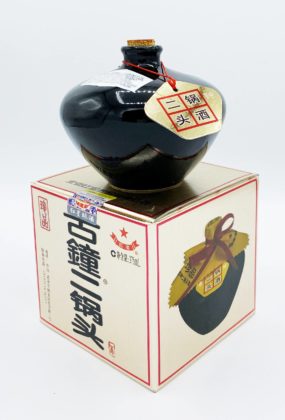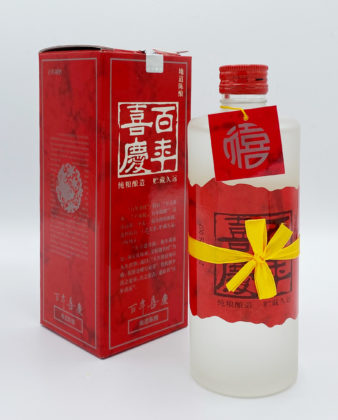Baijiu is becoming more popular in the west, but its production can be a mystery. It’s a complex drink that may take time for your palette to get used to, especially as it usually contains around 50% alcohol. Despite this, if you can learn to appreciate and adjust to its distinct, strong flavor, you’ll be able to embrace the Chinese culture in style!
In fact, it wasn’t until foreign distillation techniques were introduced to China that baijiu appeared (Baijiu brands will debate this!) in the Song or Yuan dynastic period. This drink was easier and cheaper to produce than alternative alcohol drank by the Chinese elites at the time, making it no surprise that baijiu rapidly spread throughout the whole country. Thousands of distilleries now produce baijiu in China.
So, what’s actually in it and how is it made? Read on for more information about this incredibly popular Chinese beverage!
The ingredients
Usually, the main raw ingredient included in baijiu is sorghum, a grain that may be combined with other ingredients like wheat, corn, barley, or rice. But there’s an infinite complexity here.
The steaming process
With the appropriate ingredients now sourced, they are then loaded into a large still. This still is placed over a pot of boiling water, allowing the ingredients to cook via a steaming process. Steaming is necessary to clean the ingredients since the grains are usually taken straight from the ground. Furthermore, steaming allows the ingredients to be broken down so that they can interact with qu, a fermentation agent. Once the temperature is too warm for the yeast to survive, the grain is unloaded and cooled on a flat surface.
The fermentation process
After the grain has cooled, qu is sprinkled on top. qu, as the key to this production process, is a brick of crushed wheat and barley. As the qu is fermented in a pit, the mixture is then aged for several weeks and sometimes even months in a sealed container. In this process, it produces microorganisms like yeast and fungi when under certain conditions, including a high temperature. Each manufacturer has their own proprietary mix in their qu – because it’s a living ecosystem of microorganisms – think of it like a sourdough starter or a brewery’s yeast strains.
The microorganisms produce enzymes that break down the grain, converting starches into sugars, and sugars into alcohol, in order to produce the drink’s complex and strong flavour. The main raw ingredient, sorghum, contains polyphenolic molecules which are broken down into aromatic compounds. The longer that the grains ferment, the more compounds are produced, resulting in a more potent flavour.
The distillation process
Distillation is the process in which the spirit would be extracted from a fermented substance. The substance is heated to vaporise the ethanol, and this is collected and then condensed in a separate container, creating high alcohol levels. The first baijiu batch to emerge has toxins and so is discarded – only the purest ethanol is reserved. Distillation with baijiu is often done in multiple batches.
The maturation process
Baijiu is often aged to alter the chemical composition of the liquid. Oxidation breaks down aldehydes in the process, giving the drink a mellower and, arguably, a more pleasant character. Baijiu is usually matured in jars or tanks for at least three months and sometimes even years! Storing it in a cool place minimises the risk of any baijiu being evaporated.
The blending process
This process is all about balancing the flavours of spirits to capture a particular taste. After the maturation process, sometimes hundreds of distillates are used to capture the perfect flavour and potency of just one baijiu drink!
The taste of each region’s baijiu is distinct due to jiuqu being exceptionally sensitive to the area and environment it is produced in. The misconception is often that there is only one type of baijiu, however, it is wrong to assume this. There are many different types of this drink, with some even being as different as gin and whiskey!
So, there are different steps to making baijiu. You should also be aware of the different ingredients and flavours that can be on offer – baijiu isn’t a singular type and shouldn’t be treated this way! Embracing everything that baijiu can give will allow you to fully immerse yourself in Chinese drinking culture.






